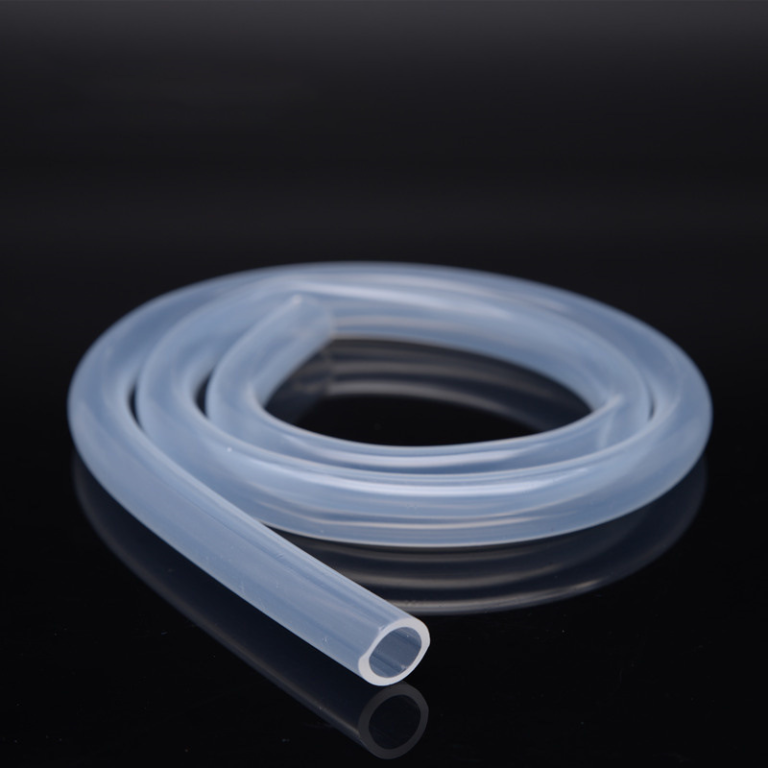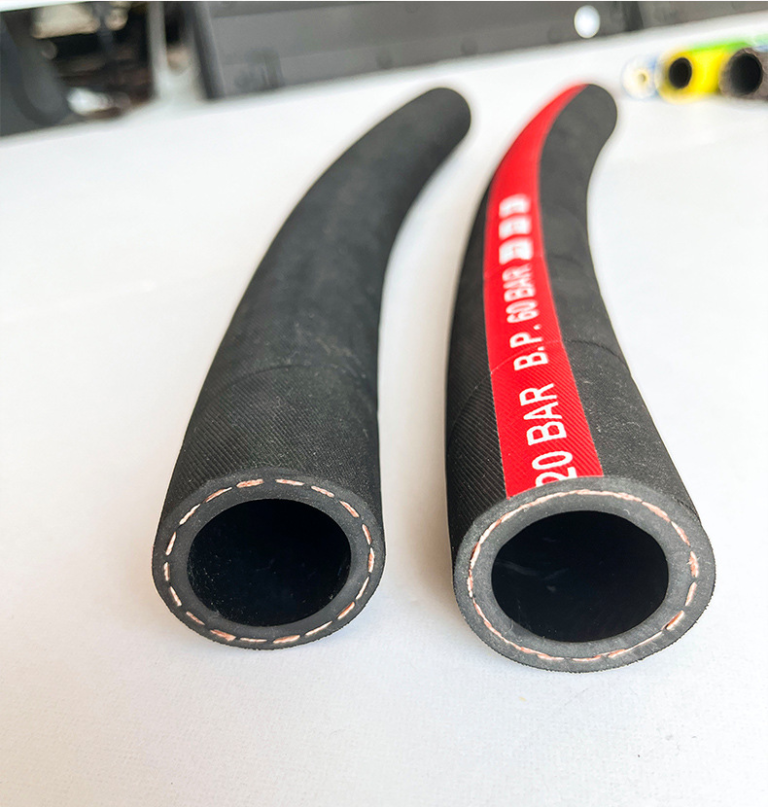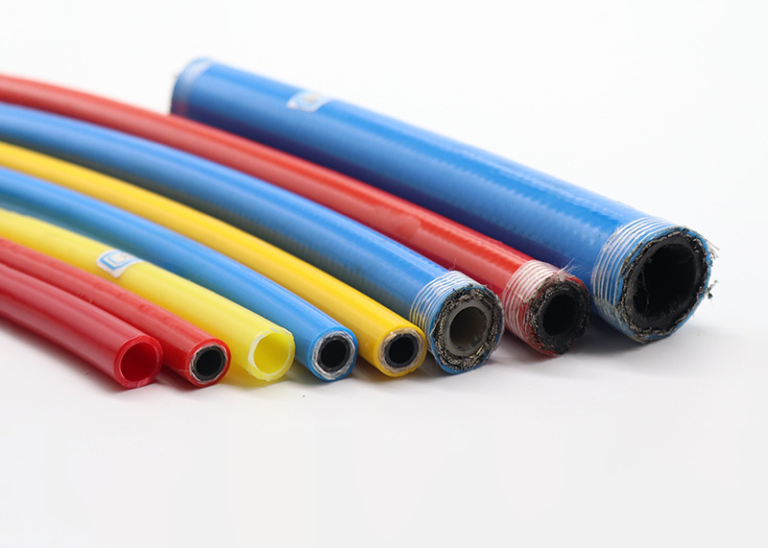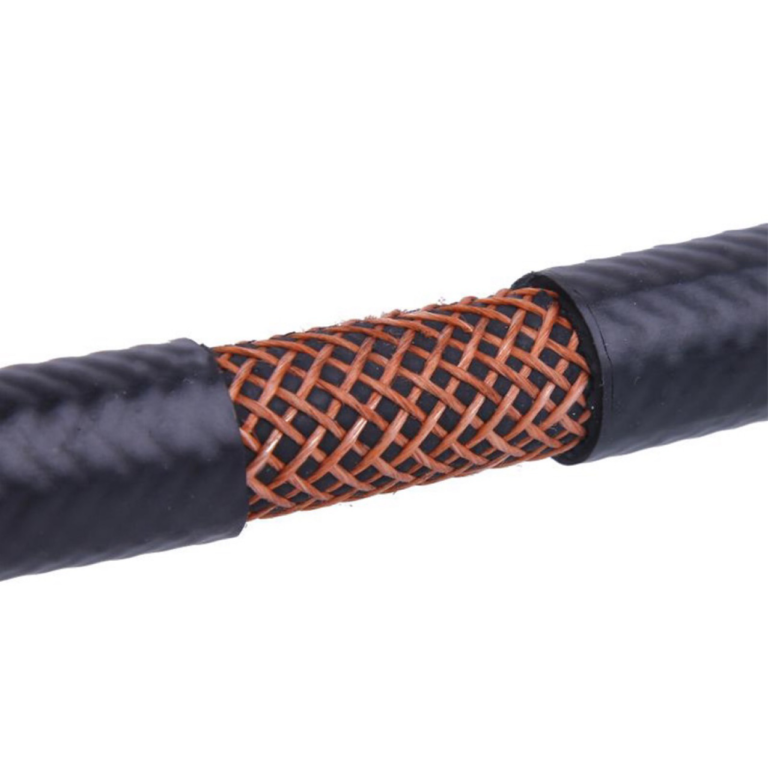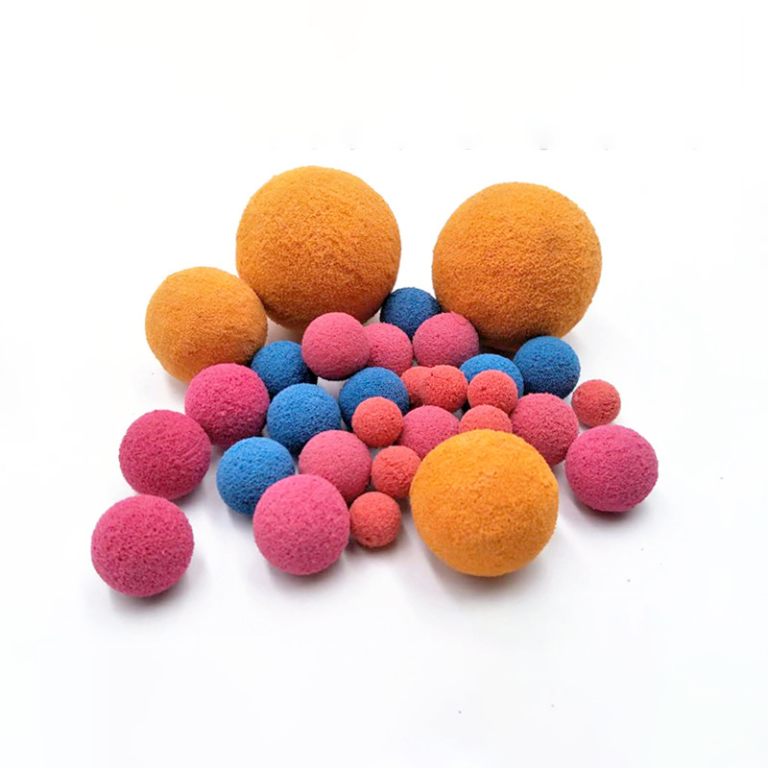Rubber blast hose: a powerful assistant for industrial sandblasting
Structure and material characteristics
Rubber sandblasting hoses are usually composed of an inner rubber layer, a reinforcement layer and an outer rubber layer. The inner rubber layer is the part that directly contacts the sandblasting material, and is generally made of high-quality rubber that is wear-resistant and erosion-resistant. This rubber can withstand the wear caused by the high-speed impact of the sandblasting material. For example, under the scouring of common sandblasting media such as quartz sand and corundum sand, it can still maintain good integrity and prevent sand particles from embedding or scratching the rubber layer. The reinforcement layer is the “skeleton” of the hose, which is mostly woven with high-strength fibers or steel wires. The steel wire woven reinforcement layer can provide the hose with excellent pressure resistance, so that it will not easily deform or break during high-pressure sandblasting operations. The fiber woven reinforcement layer not only ensures a certain strength, but also gives the hose good flexibility and is easy to operate. The outer rubber layer mainly plays the role of protecting the reinforcement layer and aesthetics. It has good weather resistance, oil resistance and anti-aging properties. It can be used for a long time in harsh outdoor environments or in industrial environments with oil pollution.
Performance advantages
Abrasion resistance
The wear resistance of rubber sandblasting hoses is one of its core advantages. During the sandblasting process, sand particles flow in the hose at a very high speed, and the strong friction is a huge test for the hose. High-quality rubber sandblasting hoses can maintain stable performance during long-term use, greatly reducing the risk of leakage and damage caused by wear. This not only extends the service life of the hose, but also reduces the cost of frequent hose replacement for enterprises.
Flexibility and ease of operation
Compared with pipes made of some other materials, rubber sandblasting hoses have excellent flexibility. Operators can easily bend and twist the hose to adapt it to various complex working scenes and the operating angle of the spray gun. In some small spaces or operations where the sandblasting direction needs to be changed frequently, the advantage of this flexibility is more obvious. Operators can control the sandblasting operation more flexibly and improve work efficiency and quality.
High-pressure resistance
Sandblasting operations usually require a certain pressure to ensure the spraying speed and force of the sand particles to achieve the ideal surface treatment effect. The high-pressure resistance of the rubber sandblasting hose ensures that it will not break or bulge under high-pressure conditions. This enables the sandblasting equipment to output pressure stably to ensure the continuity and stability of the sandblasting operation.
Sealing
Good sealing is another important performance of rubber sandblasting hose. It can effectively prevent the leakage of sandblasting materials during the transportation process, avoiding the pollution and damage to the surrounding environment and equipment caused by the leakage of sand particles. At the same time, good sealing performance also helps to maintain the pressure stability of the sandblasting system and ensure the consistency of the sandblasting effect.
Application field
Rubber sandblasting hose is widely used in many industrial fields. In the shipbuilding industry, it is used to clean the rust, old paint layer and dirt on the surface of the hull to prepare for the new coating process. In automobile manufacturing and maintenance, the surface of automobile parts can be pretreated to enhance the adhesion of the coating. In the field of metal processing, the surface of various metal products is treated by rust removal, oxide scale removal, etc. to improve the finish of the metal surface. In addition, in the construction industry, it is used to clean stains and decorative materials on the surface of buildings, and in the petrochemical industry, it is used to clean the internal and external scaling of pipes and equipment.
Maintenance and maintenance
In order to ensure the performance and service life of the rubber sandblasting hose, correct maintenance and maintenance are essential. After each use, the sandblasting material remaining inside the hose should be cleaned in time to prevent the long-term accumulation of sand particles from damaging the hose. At the same time, the appearance of the hose should be checked regularly to see if there are signs of wear, scratches, aging, etc. If any problems are found, they should be replaced or repaired in time. When storing, the hose should be protected from adverse factors such as direct sunlight, high temperature, and humidity. It is best to store it in a cool, dry place with certain ventilation conditions.
In short, the rubber sandblasting hose occupies an irreplaceable position in the field of industrial sandblasting with its unique structure and excellent performance. With the continuous development of industrial technology, the rubber sandblasting hose is also constantly improving and innovating, developing towards higher wear resistance, better flexibility, and stronger high pressure resistance, providing more reliable guarantees for related operations such as industrial surface treatment.


